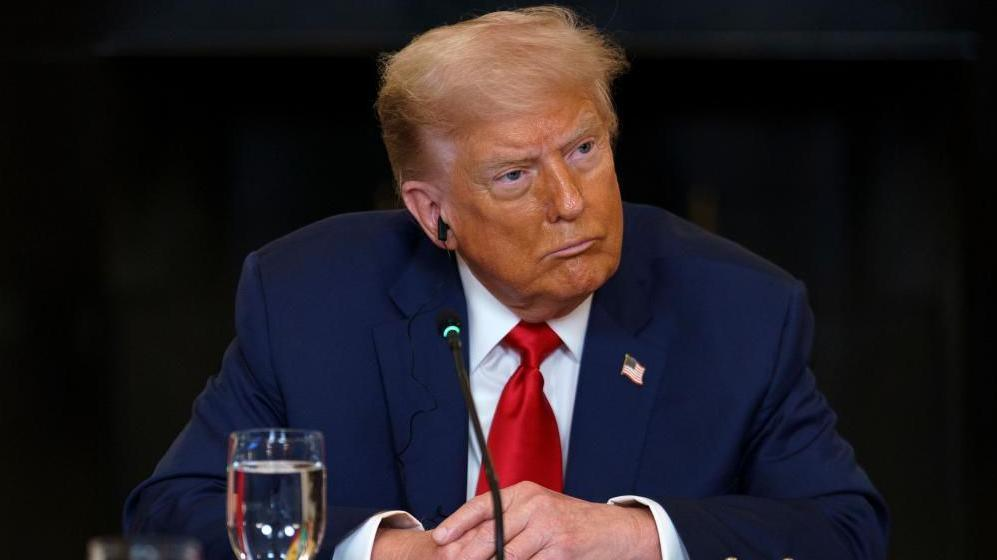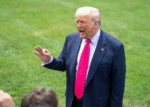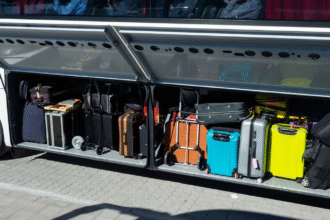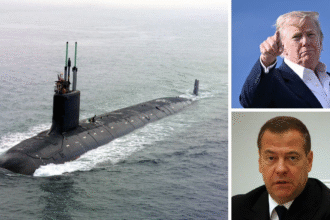WASHINGTON In a significant policy shift, President Donald Trump announced Monday a dual-pronged strategy aimed at ending the prolonged war between Russia and Ukraine: a new weapons deal channeled through European allies and a strict 50-day deadline for Moscow to strike a peace agreement or face severe economic consequences.
The announcement, made during a meeting with NATO Secretary General Mark Rutte at the White House, marks the most assertive move by the Trump administration on the Ukraine conflict since he assumed office in January.
“I felt we had a deal about four times. But it just kept going on and on,” Trump said, expressing clear frustration with Russian President Vladimir Putin.
A Game-Changing Arms Arrangement
Under Trump’s plan, NATO countries will purchase U.S.-made weapons and then transfer them to Ukraine, allowing Washington to provide critical military aid without directly violating his campaign promise to scale back America’s direct involvement in the conflict.
The weapons include highly sought-after Patriot missile systems, as well as Howitzer rounds, short-range missiles, and air-to-air medium-range missiles all crucial in bolstering Ukraine’s defense against relentless Russian missile barrages.
Trump characterized the European commitment as a turning point.
“Europe has a lot of spirit for this war. When I first got involved I didn’t think they did, but they do,” he said.
Secretary General Rutte echoed that sentiment, labeling the agreement a “game-changer,” and named Germany, Denmark, Sweden, Norway, and Finland as early contributors to the coordinated effort.
A High-Stakes Ultimatum for Moscow
Trump’s announcement wasn’t limited to arms. In a stunning escalation, the president issued an ultimatum to the Kremlin: reach a peace deal within 50 days or face a new wave of trade penalties.
“We’re going to be doing very severe tariffs if we don’t have a deal in 50 days tariffs at about 100%,” Trump warned. “You’d call them secondary tariffs.”
According to a senior White House official, these “secondary sanctions” would target countries that continue to import Russian oil, including China and India, applying pressure not only on Moscow but also on key trade partners.
“It’s about tariffs on countries like India and China that are buying their oil,” said Matt Whitaker, U.S. Ambassador to NATO. “It really is going to dramatically impact the Russian economy.”
An Evolving Stance Toward Putin
Trump, once known for his amicable tone toward Putin, has shown increasing irritation in recent weeks. According to officials, the U.S. president believes Putin has undermined multiple private peace overtures, opting instead to escalate military aggression.
“My conversations with him are very pleasant, and then the missiles go off at night,” Trump said during the meeting, adding, “He fooled Clinton, Bush, Obama, Biden he didn’t fool me.”
Sources within the administration say that Trump now sees arming Ukraine as a way to finally gain leverage over Putin, possibly forcing the Russian leader into serious negotiations.
Financial and Strategic Incentives for the U.S.
The weapons deal is not only a strategic maneuver but also one with major financial incentives. A single Patriot system can cost upwards of $1 billion, and U.S. officials have emphasized that selling rather than gifting the weapons helps maintain profitability and reduce political backlash.
“By routing weapons through Europe, the president avoids direct U.S. entanglement while still helping Ukraine and making money doing it,” said a senior defense official familiar with the plan.
Additionally, many of the weapons to be transferred are already pre-positioned in Europe, enabling faster deployment to the Ukrainian front than if they were shipped from U.S. bases or newly manufactured.
Kyiv’s Lifeline
Ukraine’s President Volodymyr Zelensky reportedly presented Trump and NATO leaders last month with an urgent request list, emphasizing the dire need for 10 new Patriot missile systems to defend Ukrainian cities.
According to Ukrainian officials, the Patriot batteries have become irreplaceable in shielding civilians from Russia’s intensified missile attacks. Kyiv’s fear is not just losing battlefield weapons but losing the protection that saves lives at home.
Ukrainian soldiers have been vocal about this concern.
“It’s not the loss of rifles or artillery that keeps us up at night. It’s the thought of another missile hitting our families in the city without warning,” one Ukrainian serviceman told CNN earlier this month.
Will the Deadline Work?
The clock now ticks toward Trump’s 50-day deadline. Officials say the goal is to force Russia back to the negotiating table through a carrot-and-stick approach overwhelming Ukraine with military support while threatening to cripple Russia’s global trade routes.
While skeptics doubt whether Moscow will respond to pressure, others see the strategy as a way to reassert U.S. influence without direct boots on the ground.
“He’s seriously frustrated with Putin,” a senior official said. “He wants to end the war on his terms, and this is how he intends to do it.”
Trump’s new dual approach arming Ukraine through European intermediaries and wielding economic pressure through global sanctions signals a dramatic shift in U.S. posture on the Russia-Ukraine war. It also underscores the fragility of global alliances and the balancing act between diplomacy, economics, and military support.
As the 50-day clock ticks down, the world will be watching not just Moscow’s reaction, but whether Trump’s “art of the deal” can finally deliver peace in one of the 21st century’s most intractable conflicts.






